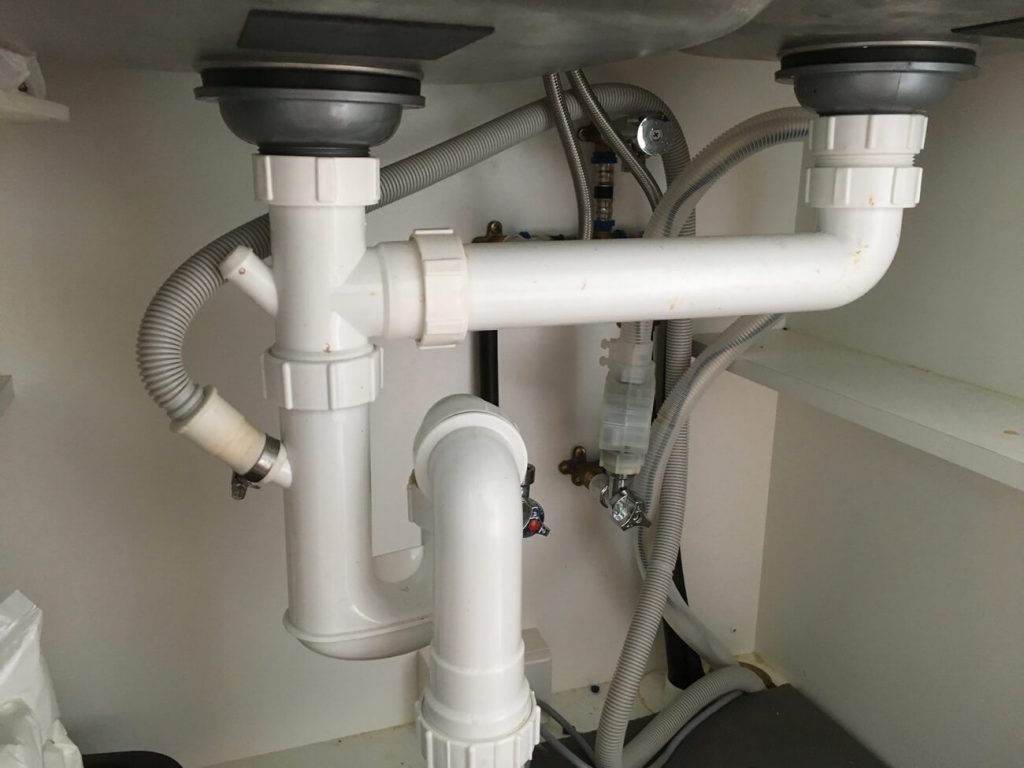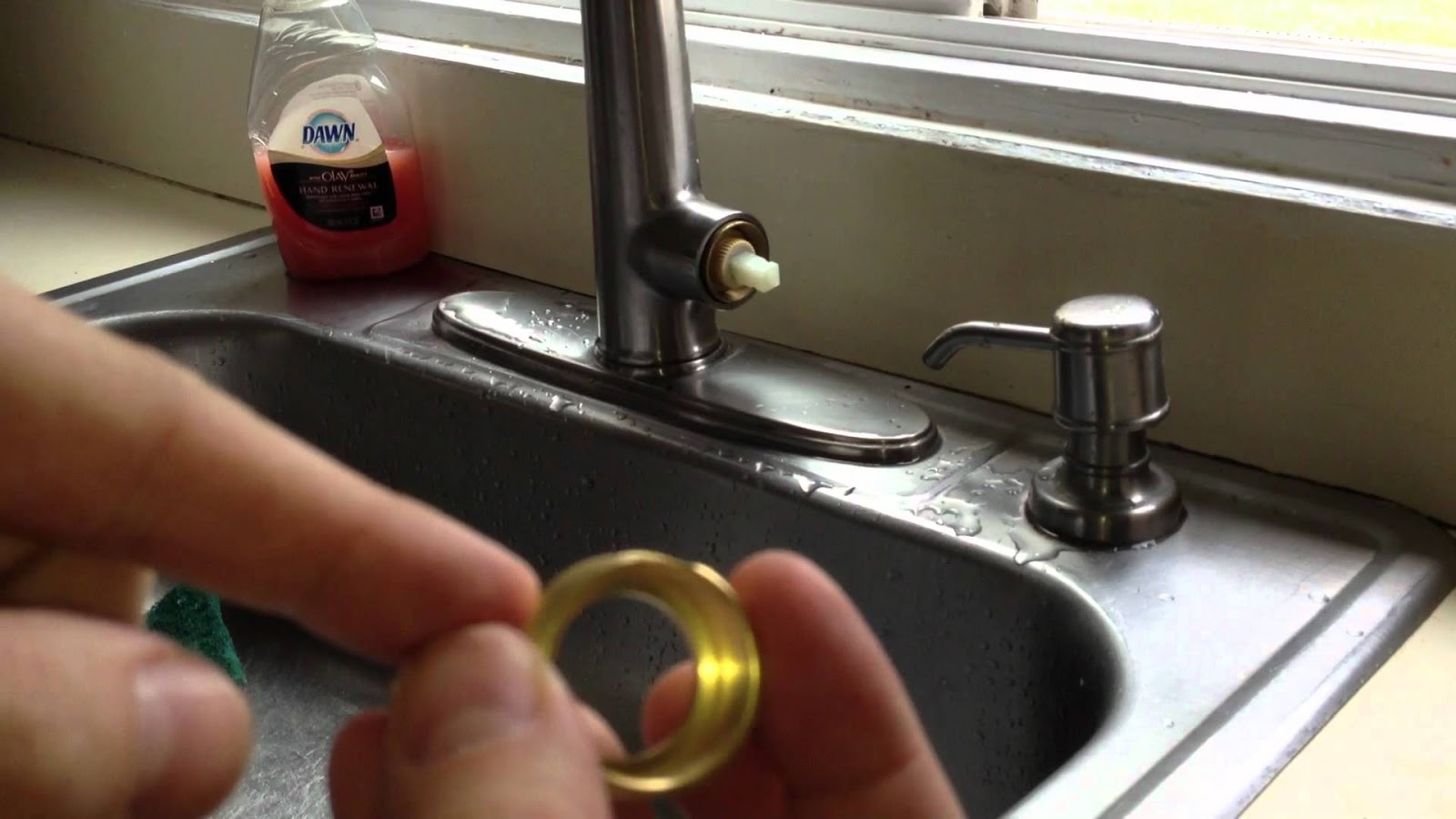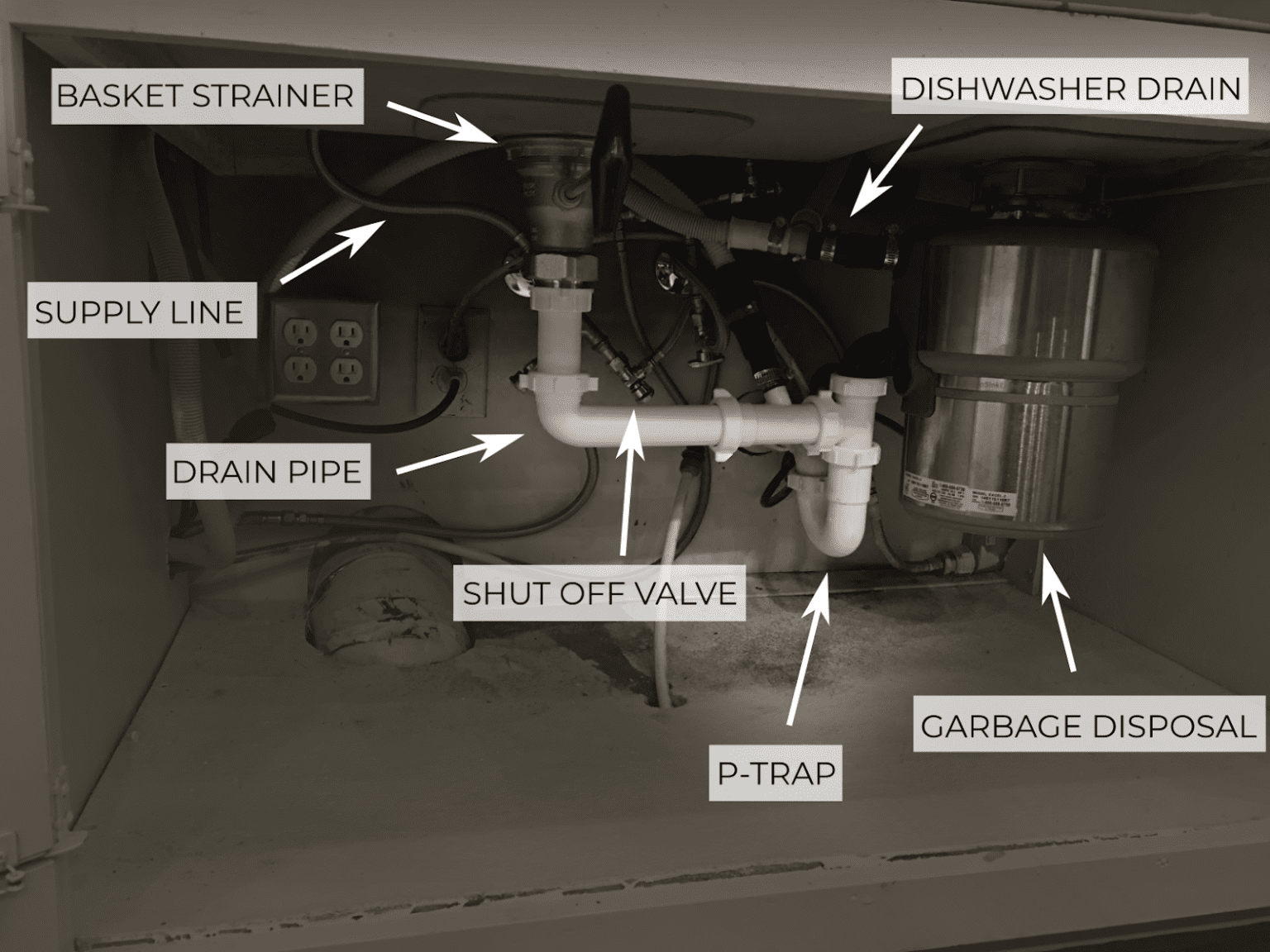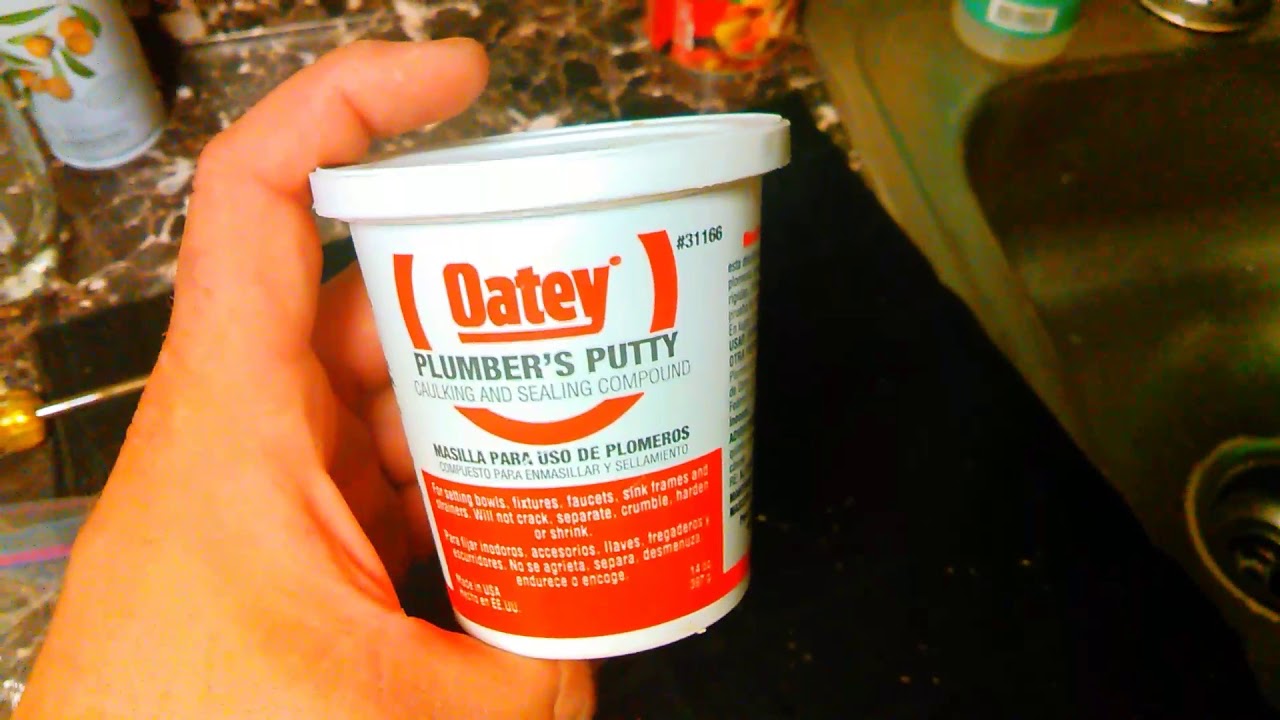Dealing with a leak under your kitchen sink can be a frustrating and messy problem. Not only can it cause damage to your cabinets and flooring, but it can also waste a significant amount of water and increase your utility bills. However, fixing a leak under the kitchen sink doesn't have to be a daunting task. With the right tools and techniques, you can easily fix the leak and prevent it from happening again in the future.How to Fix a Leak Under the Kitchen Sink
Before we dive into how to fix a leak under the kitchen sink, it's important to understand the common causes of these leaks. One of the most common causes is a loose or damaged connection between the sink and the drain line. This can happen over time due to regular use, or it can be caused by using too much force when tightening the connections. Another common cause of leaks is a cracked or worn out drain pipe. This is especially common in older homes where the pipes may have become corroded or damaged over time. Additionally, a leak can occur if the sealant around the sink or drain has deteriorated, allowing water to seep through.Common Causes of Leaks Under the Kitchen Sink
Knowing the signs of a leak under the kitchen sink can help you catch the problem early on and prevent it from causing further damage. Some of the most common signs of a leak include water pooling under the sink, musty or moldy odors, and damaged or warped cabinet materials. You may also notice a decrease in water pressure or an increase in your water bill.Signs of a Leak Under the Kitchen Sink
If you've identified a leak under your kitchen sink, the first step is to turn off the water supply to the sink. Then, you can try some DIY solutions to fix the leak. This may include tightening loose connections, replacing damaged pipes, or sealing any gaps with plumber's putty. However, it's important to note that these solutions may only provide temporary relief and may not fully address the root cause of the leak.DIY Solutions for a Kitchen Sink Leak
In some cases, a leak under the kitchen sink may require the expertise of a professional plumber. If you're not comfortable or experienced with plumbing repairs, it's best to leave it to the professionals. A plumber can properly diagnose the cause of the leak and provide a long-term solution to fix it. They may also be able to identify any additional issues that may be contributing to the leak, such as a clogged drain or damaged pipes.Professional Plumbing Services for a Kitchen Sink Leak
The best way to deal with a leak under the kitchen sink is to prevent it from happening in the first place. Regularly inspecting the sink and its connections can help you catch any potential problems early on. It's also important to avoid using excessive force when tightening connections and to be mindful of what you're putting down the drain to prevent clogs and damage to the pipes.Preventing Leaks Under the Kitchen Sink
If your kitchen sink drain pipe is cracked or worn out, it will need to be replaced to fix the leak. This is a relatively simple task that can be done with a few basic tools. Start by removing the old drain pipe, then install the new one, making sure to properly tighten the connections. It's important to also use plumber's tape to ensure a secure and leak-free fit.Replacing a Kitchen Sink Drain Pipe
In addition to leaks under the sink, you may also experience a leak from the faucet itself. This can be caused by a worn out or damaged O-ring or seal. To fix this type of leak, you will need to disassemble the faucet and replace the damaged parts. Be sure to turn off the water supply before attempting any repairs.Repairing a Kitchen Sink Faucet Leak
In some cases, a leak under the kitchen sink may not be immediately visible. This is known as a hidden leak and can be more difficult to detect and fix. One way to detect a hidden leak is to turn off all the water sources in your home and check your water meter. If it's still moving, then you likely have a hidden leak. To fix it, you may need to hire a professional plumber to locate and repair the source of the leak.How to Detect and Fix a Hidden Leak Under the Kitchen Sink
Plumber's putty is a versatile and affordable solution for sealing leaks under the kitchen sink. It can be used to seal gaps around the sink or drain, as well as to secure loose connections. To use plumber's putty, simply roll it into a thin strip and apply it to the area that needs to be sealed. Then, use a damp cloth to smooth out the putty and create a watertight seal. Dealing with a leak under the kitchen sink can be a hassle, but with the right knowledge and tools, you can fix the problem and prevent it from happening again in the future. Regular maintenance and inspections can also help catch any potential issues early on and save you from costly repairs. Remember, if you're not comfortable with DIY solutions or the leak persists, it's best to call in a professional plumber for help.Using a Plumber's Putty to Seal a Kitchen Sink Leak
How to Prevent Leaks Under Your Kitchen Sink

The Importance of a Well-Functioning Kitchen Sink
 The kitchen sink is one of the most used and essential fixtures in any home. It is where we wash our hands, clean our dishes, and prepare our food. Therefore, it is crucial to ensure that your kitchen sink is in good working condition to avoid any inconvenience or health hazards. However, one common issue that many homeowners face is a leak under their kitchen sink. Not only can this cause damage to your cabinets and flooring, but it can also lead to mold and mildew growth, which can be harmful to your health. In this article, we will discuss how to prevent leaks under your kitchen sink and keep your kitchen functioning properly.
The kitchen sink is one of the most used and essential fixtures in any home. It is where we wash our hands, clean our dishes, and prepare our food. Therefore, it is crucial to ensure that your kitchen sink is in good working condition to avoid any inconvenience or health hazards. However, one common issue that many homeowners face is a leak under their kitchen sink. Not only can this cause damage to your cabinets and flooring, but it can also lead to mold and mildew growth, which can be harmful to your health. In this article, we will discuss how to prevent leaks under your kitchen sink and keep your kitchen functioning properly.
Identifying the Source of the Leak
 Before you can fix a leak, you must first determine where it is coming from. Common sources of leaks under the kitchen sink include a cracked pipe, loose connection, or a faulty seal.
Water stains, dampness, and a musty odor
are all signs of a leak. To identify the exact source, turn on the water and observe where the leak is coming from. Once you have identified the source, you can proceed with fixing the issue.
Before you can fix a leak, you must first determine where it is coming from. Common sources of leaks under the kitchen sink include a cracked pipe, loose connection, or a faulty seal.
Water stains, dampness, and a musty odor
are all signs of a leak. To identify the exact source, turn on the water and observe where the leak is coming from. Once you have identified the source, you can proceed with fixing the issue.
Replacing the Seal
 One of the most common causes of leaks under the kitchen sink is a faulty seal. The seal, also known as a gasket, is located between the sink and the drain, and it ensures that water does not leak out. Over time, the seal can become worn out or cracked, leading to leaks. To replace the seal, start by removing the drain pipe and cleaning any debris or old putty around the seal. Then, apply a new layer of plumber's putty and tighten the drain back in place. This should create a tight seal and prevent any further leaks.
One of the most common causes of leaks under the kitchen sink is a faulty seal. The seal, also known as a gasket, is located between the sink and the drain, and it ensures that water does not leak out. Over time, the seal can become worn out or cracked, leading to leaks. To replace the seal, start by removing the drain pipe and cleaning any debris or old putty around the seal. Then, apply a new layer of plumber's putty and tighten the drain back in place. This should create a tight seal and prevent any further leaks.
Tightening Connections
 Loose connections can also cause leaks under your kitchen sink. Check all the connections, including the pipes, valves, and faucet, and
tighten any loose nuts or fittings
. If the connection is too loose or damaged, you may need to replace it with a new one. This simple step can save you from a potential major leak in the future.
Loose connections can also cause leaks under your kitchen sink. Check all the connections, including the pipes, valves, and faucet, and
tighten any loose nuts or fittings
. If the connection is too loose or damaged, you may need to replace it with a new one. This simple step can save you from a potential major leak in the future.
Regular Maintenance
 Prevention is always better than a cure, and this is especially true when it comes to leaks under your kitchen sink.
Regularly checking for any signs of leaks and addressing them immediately can save you from costly repairs down the line.
Also, keep an eye on the condition of your sink and its components, such as the faucet and pipes, and replace them if necessary.
In conclusion, a leak under your kitchen sink can cause significant damage and inconvenience if not addressed promptly. By identifying the source of the leak, replacing the seal, tightening connections, and regularly maintaining your sink, you can prevent leaks and keep your kitchen functioning properly. Remember to always seek professional help if you are unsure about fixing the issue yourself. Keep your kitchen sink in top shape, and your home will thank you.
Prevention is always better than a cure, and this is especially true when it comes to leaks under your kitchen sink.
Regularly checking for any signs of leaks and addressing them immediately can save you from costly repairs down the line.
Also, keep an eye on the condition of your sink and its components, such as the faucet and pipes, and replace them if necessary.
In conclusion, a leak under your kitchen sink can cause significant damage and inconvenience if not addressed promptly. By identifying the source of the leak, replacing the seal, tightening connections, and regularly maintaining your sink, you can prevent leaks and keep your kitchen functioning properly. Remember to always seek professional help if you are unsure about fixing the issue yourself. Keep your kitchen sink in top shape, and your home will thank you.
















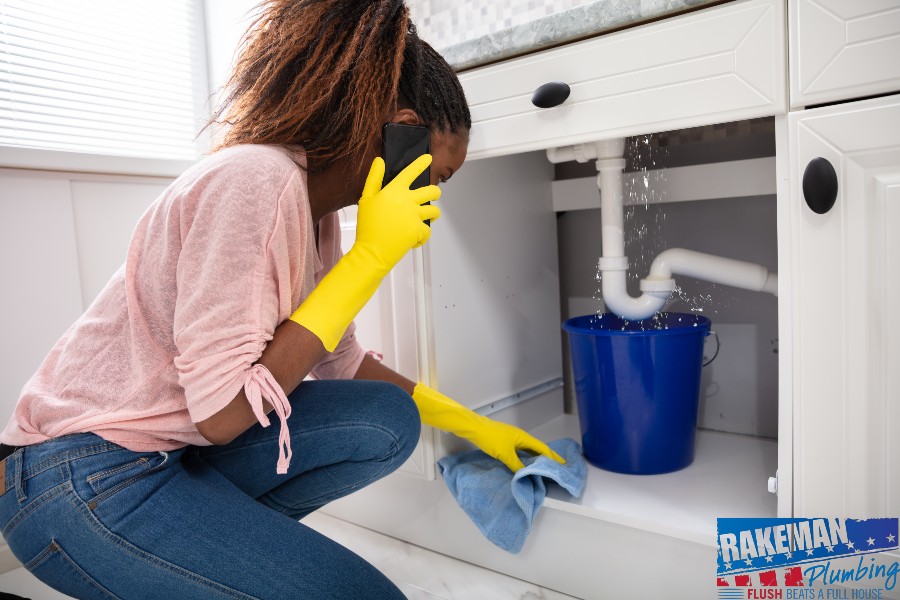





















/how-to-install-a-sink-drain-2718789-hero-24e898006ed94c9593a2a268b57989a3.jpg)











